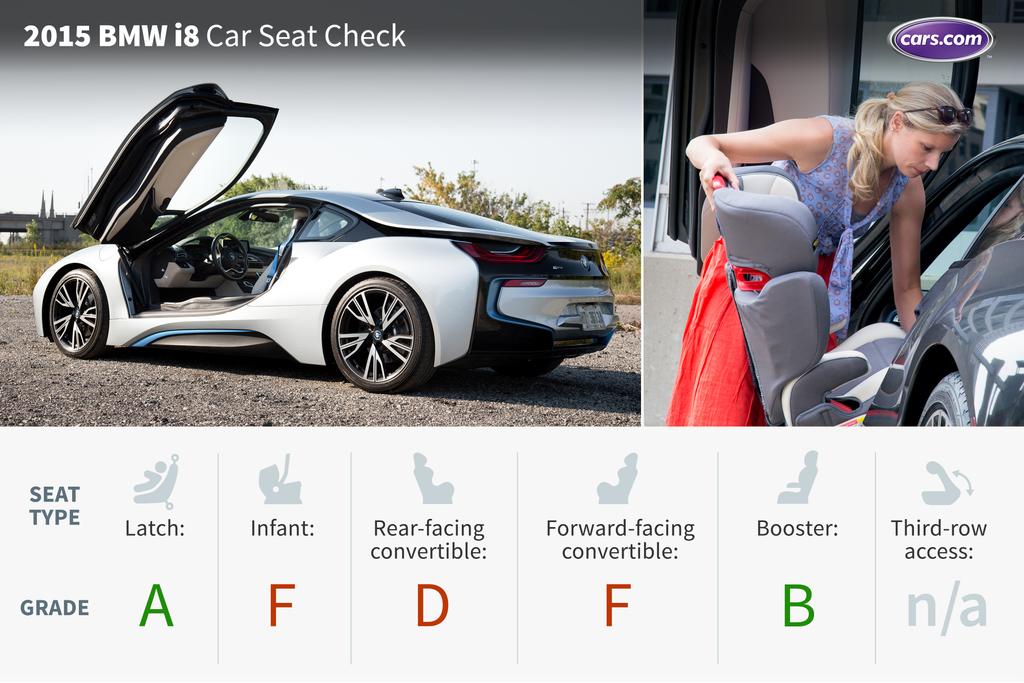
We know, sports cars are not made with children in mind, but if it has a backseat, it's federally mandated to have lower Latch and top tether anchors for car seats. Such is the case with the BMW i8, the German automaker's hybrid sports car. Surprising no one, the plug-in gas/electric coupe fizzled out in our Car Seat Check. Not only is the two-position backseat inhospitable to child-safety seats, just getting into the second row requires some serious body contortions.
How many car seats fit in the second row? Two
What We Like
- The two sets of Latch anchors are easy to use. They sit in the seatbacks under hinged plastic covers. Two tether anchors are on the tiny rear shelf under hinged plastic covers; we had no trouble connecting to them.
- Out of our car seats, the booster fit the best, but we still had a few issues. The i8’s seat bottoms are recessed, which pushed the bottom of our booster into the buckle. Once the booster seat is in place, you have to shimmy it side-to-side to access the buckle for connection.
What We Don't
- It was challenging to get the car seats into the i8’s backseat because of the car’s wing-like doors, small opening to the backseat and tight confines.
- We were able to install the infant car seat, but because it’s so long, our test passenger was unable to sit in the front seat. She had so little legroom that she had to rest her knees at an angle to fit. Installing the infant seat works only if no one is sitting in the front passenger seat.
- With the rear-facing convertible, the i8's deep seat bottom means that parents have to use a rolled-up towel or pool noodle to counter the steep angle. We were able to install the car seat, but our 5-foot-6 tester's knees were pushed against the glove box, which isn’t safe or comfortable.
- In forward-facing mode, the angle of the i8's seat bottom cushion interfered again, causing the car seat's base to overhang the seat. Eighty percent of the car seat base should be on the seat cushion, which was not the case here.
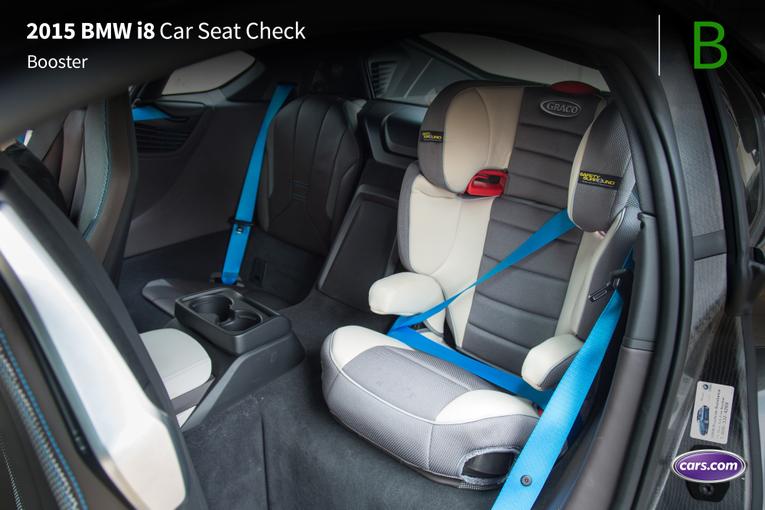
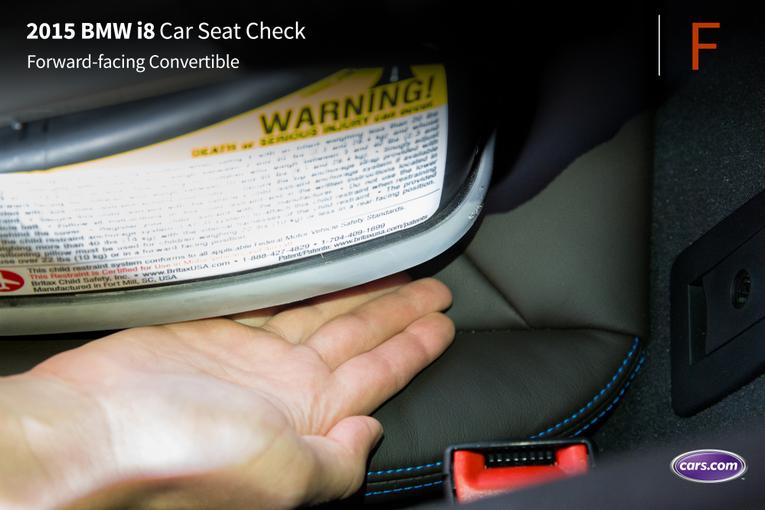
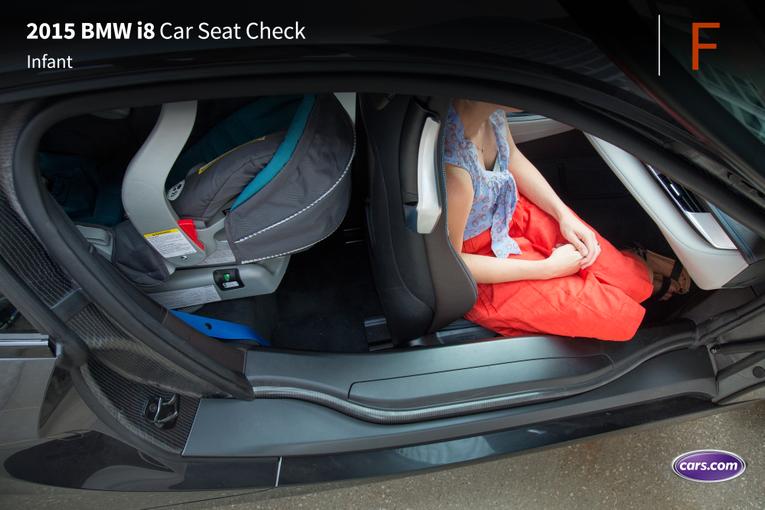
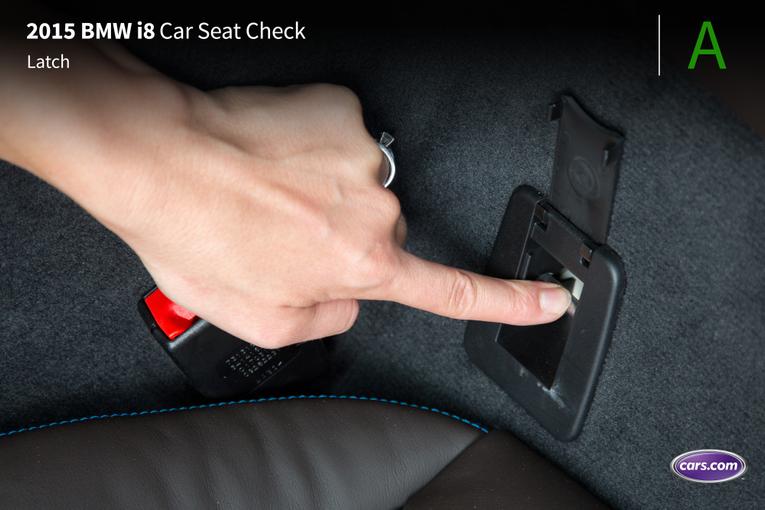

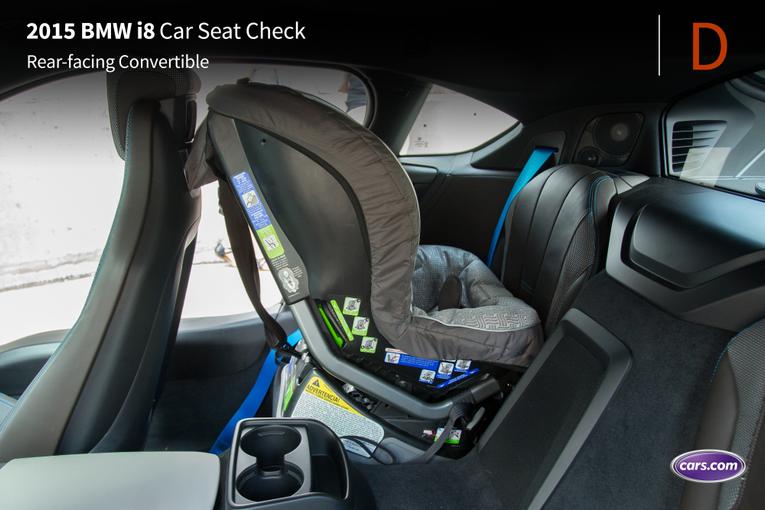
Grading Scale
A: Plenty of room for the car seat and the child; doesn't impact driver or front-passenger legroom. Easy to find and connect to Latch and tether anchors. No fit issues involving head restraint or seat contouring. Easy access to the third row.
B: Plenty of room. One fit or connection issue. Some problems accessing third row when available.
C: Marginal room. Two fit or connection issues. Difficult to access third row when available.
D: Insufficient room. Two or more fit or connection issues.
F: Does not fit or is unsafe.
About Cars.com's Car Seat Checks
Editors Jennifer Geiger and Jennifer Newman are certified child safety seat installation technicians.
For the Car Seat Check, we use a Graco SnugRide Classic Connect 30 infant-safety seat, a Britax Marathon convertible seat and Graco TurboBooster seat. The front seats are adjusted for a 6-foot driver and a 5-foot-6 passenger. The three child seats are installed in the second row. The booster seat sits behind the driver's seat, and the infant and convertible seats are installed behind the front passenger seat.
We also install the forward-facing convertible in the second row's middle seat with the booster and infant seat in the outboard seats to see if three car seats will fit; a child sitting in the booster seat must be able to reach the seat belt buckle. If there's a third row, we install the booster seat and a forward-facing convertible. To learn more about how we conduct our Car Seat Checks, go here.
Parents should also remember that they can use the Latch system or a seat belt to install a car seat, and that Latch anchors have a weight limit of 65 pounds, including the weight of the child and the weight of the seat itself.
No comments:
Post a Comment